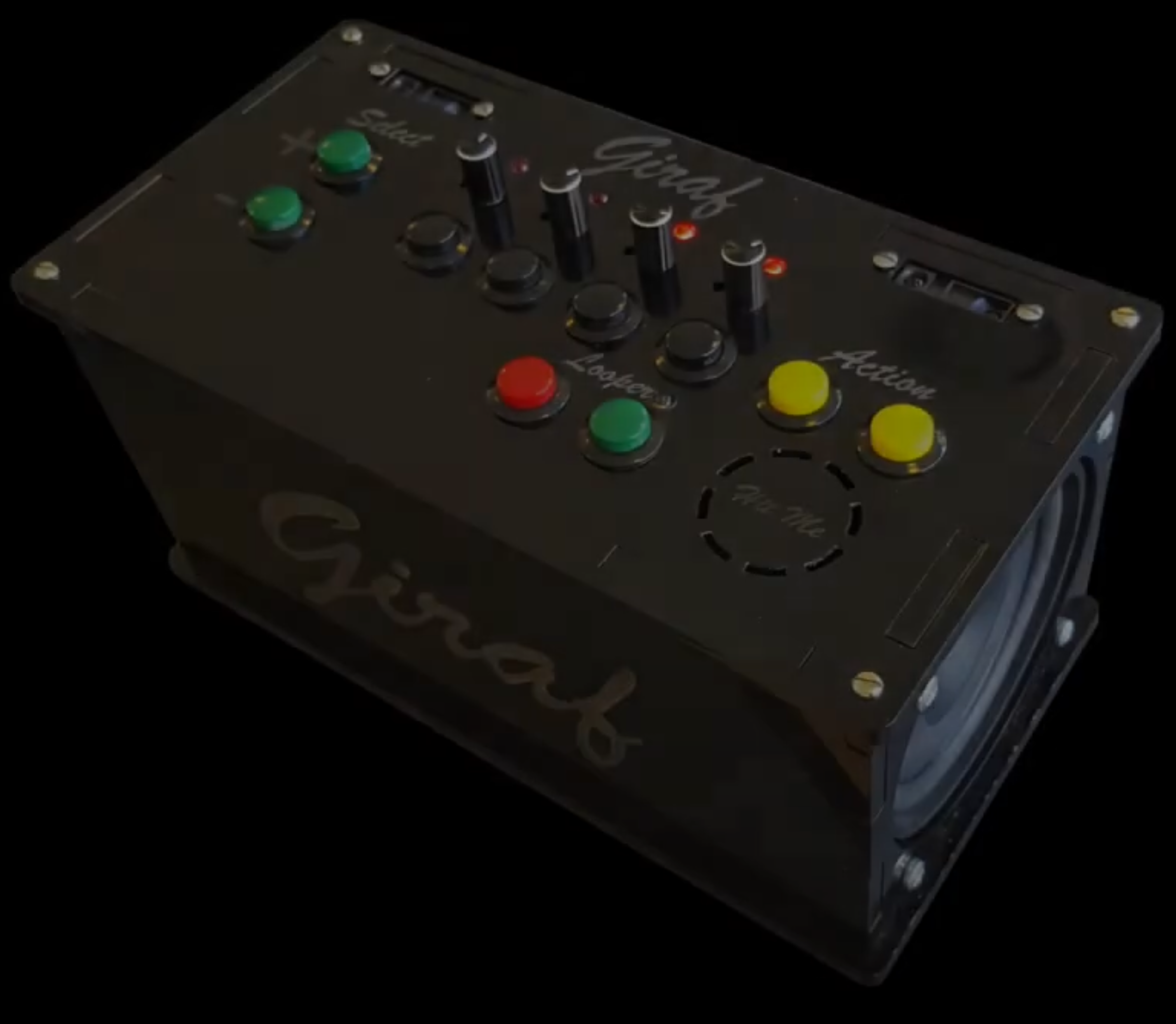🔥 Tromleorkestret 🔥
An original music project centered around a Firebreathing Music Machine ✨
The basis of Giraf is a polyphonic sampler where a sample can be played by hitting the “sound trigger” pad – the amplitude of the sound is determined by how hard the pad is struck. The pitch of this triggered sample can then be controlled by a infra-red distance sensor, in such a way that the further the hand is from the sensor, the lower the pitch. Instead of having continous control, the pitch that is actually played is determined in relation to a selected musical scale making harmonically related results easier to acheive.

Se a walktrough of the instrument in the video below:
The signal path of Giraf is as follows:

Alongside the main sampler Giraf has multiple built-in effects.
The code implementation is written in C++ and it was programmed using the browser-based Bela IDE, which runs on a server on the Bela itself – no internet required. Using C++ and working with Bela allowed me to keep everything very fast and responsive. There was a total of ~66 samples group delay, that is - at 44.1kHz - 1.5ms of latency from trigger to the sound coming out: thank you Bela!!!
The project can be found on the Bela blog here: Giraf
